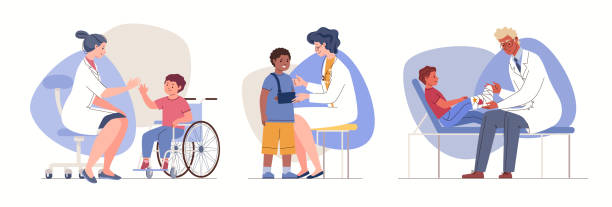Orthopedic surgeons specialize in the diagnosis, treatment, and prevention of musculoskeletal conditions, encompassing bones, joints, ligaments, tendons, muscles, and nerves. From sports injuries to degenerative diseases, these specialists employ a range of surgical techniques to restore function and alleviate pain.
Let's delve into some of the most common procedures performed by orthopedic surgeons:
1. Total Joint Replacement: Total joint replacement, particularly of the hip and knee, is a common procedure performed by orthopedic surgeons to treat severe arthritis or joint damage. During this surgery, the damaged joint is replaced with a prosthetic implant made of metal, plastic, or ceramic components, restoring mobility and reducing pain.
2. Arthroscopy: Arthroscopy is a minimally invasive surgical technique used to diagnose and treat various joint conditions, such as torn cartilage, ligament injuries, and joint inflammation. Orthopedic surgeons insert a small camera, called an arthroscope, into the joint through tiny incisions, allowing them to visualize the internal structures and perform repairs with specialized instruments.
3. Fracture Repair: Orthopedic surgeons are experts in treating fractures, or broken bones, using a variety of techniques depending on the location and severity of the injury. This may involve realigning the bone fragments (reduction) and immobilizing them with casts, braces, or surgical hardware such as pins, screws, plates, or rods.
4. ACL Reconstruction: Anterior cruciate ligament (ACL) reconstruction is a surgical procedure commonly performed to repair a torn ACL, a major stabilizing ligament in the knee joint. Orthopedic surgeons reconstruct the ligament using graft tissue, often from the patient's own body (autograft) or from a donor (allograft), to restore stability and function to the knee.
5. Rotator Cuff Repair: The rotator cuff is a group of muscles and tendons that stabilize the shoulder joint and facilitate arm movement. Orthopedic surgeons may perform arthroscopic or open surgery to repair a torn rotator cuff, reattaching the damaged tendon to the bone and restoring strength and mobility to the shoulder.
6. Spinal Surgery: Orthopedic surgeons specializing in spine surgery treat a variety of spinal conditions, including herniated discs, spinal stenosis, degenerative disc disease, and spinal deformities such as scoliosis. Surgical procedures may include spinal fusion, discectomy, laminectomy, and disc replacement, aimed at relieving pain and restoring spinal stability.
7. Hand and Wrist Surgery: Orthopedic surgeons also perform surgeries to treat conditions affecting the hand and wrist, such as carpal tunnel syndrome, tendon injuries, arthritis, and fractures. Procedures may include carpal tunnel release, tendon repair, joint replacement, and fracture fixation, aimed at restoring function and relieving pain.
8. Foot and Ankle Surgery: Orthopedic surgeons treat a variety of foot and ankle conditions, including bunions, hammertoes, ankle sprains, and fractures. Surgical procedures may involve realigning bones, repairing ligaments and tendons, and fusing joints to correct deformities and restore function to the lower extremities.
9. Sports Medicine Procedures: Orthopedic surgeons with specialized training in sports medicine perform procedures to treat sports-related injuries, such as torn ligaments (ACL, MCL), meniscus tears, and cartilage injuries. These may include arthroscopic surgery, ligament reconstruction, and cartilage repair techniques, aimed at returning athletes to their pre-injury level of activity.
In conclusion, orthopedic surgeons play a crucial role in diagnosing and treating a wide range of musculoskeletal conditions through various surgical procedures. Whether it's repairing fractures, replacing joints, or addressing sports injuries, these specialists utilize their expertise and advanced techniques to restore function, alleviate pain, and improve the quality of life for their patients.






Comments